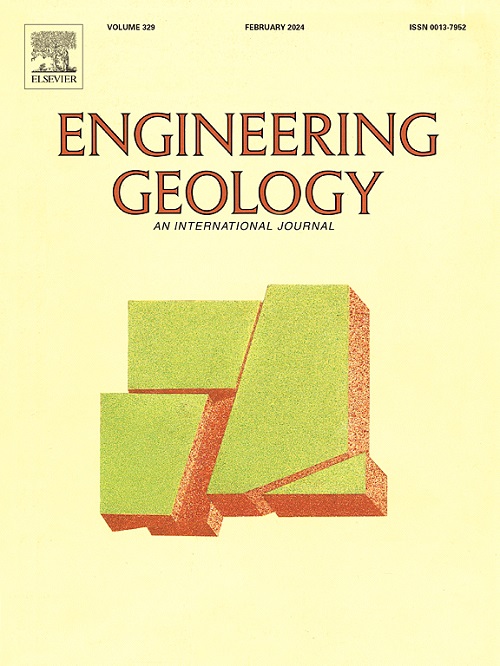层状岩层中的注水诱发地震力矩
IF 6.9
1区 工程技术
Q1 ENGINEERING, GEOLOGICAL
引用次数: 0
摘要
流体注入过程中地震力矩释放的适当估算对于降低诱发地震的风险和指导地质能源行业的安全运行至关重要。然而,目前的单层模型忽略了不同岩层的断层滑动对地震力矩释放的贡献。在此,我们报告了一个包含多层函数的分析模型,用于预测层状岩层中注入诱发的地震力矩。该模型是根据地震运动引发的断层滑移建立的,特别考虑了地震断层上的地震滑移前沿和流体扩散前沿相对于岩层界面的位置。我们将从我们的模型中获得的最大地震力矩与从三个单层模型中估算的地震力矩以及从 11 个现场案例中测量的地震力矩进行了比较。结果表明,在层状岩层中使用单层模型可能会低估最大地震力矩。我们还强调,正确选择层模型对于合理评估地震力矩释放具有重要意义。最后,我们应用单层和双层模型预测了 2019 年 2 月 5 日中国四川威远页岩气田 Mw 4.0 地震的最大地震力矩。工程应用进一步证实了在层状岩层中使用双层模型的必要性。此外,通过对断层段放大系数的评估,可以更好地了解不同岩层的诱发地震危险性,并可能指导注液过程中注入率的安全阈值。本文章由计算机程序翻译,如有差异,请以英文原文为准。
Injection-induced seismic moment in layered rock formations
Appropriate estimation of seismic moment release during fluid injection is critical to mitigate the risk of induced seismic hazards and to guide safe operation in the geo-energy industry. However, the present single-layer models overlook the contributions of fault slip in different rock layers to the seismic moment release. Here we report an analytical model incorporating a multiple-layer function to predict the injection-induced seismic moment in layered rock formations. This model is established based on fault slip triggered by aseismic motion, particularly considering the locations of aseismic slip front and fluid diffusion front on a seismogenic fault in relative to the layer interface. We compare the maximum seismic moment obtained from our model to those estimated from three single-layer models and those measured from eleven field cases. The results highlight possible underestimation of the maximum seismic moment using the single-layer models in the layered rock formations. We also emphasize that a proper selection of layer model is significant to reasonably assess the seismic moment release. Lastly, we apply both the single-layer and double-layer models to predict the maximum seismic moment of the 5 February 2019 4.0 earthquake in the Weiyuan Shale Gas Field in Sichuan, China. The engineering application further confirms the necessity of using the double-layer model in the layered rock formations. Additionally, the assessment of amplification factors for fault segments provides a better understanding of induced seismic hazards in different rock layers and possibly guides the safety threshold of injection rate during fluid injection.
求助全文
通过发布文献求助,成功后即可免费获取论文全文。
去求助
来源期刊

Engineering Geology
地学-地球科学综合
CiteScore
13.70
自引率
12.20%
发文量
327
审稿时长
5.6 months
期刊介绍:
Engineering Geology, an international interdisciplinary journal, serves as a bridge between earth sciences and engineering, focusing on geological and geotechnical engineering. It welcomes studies with relevance to engineering, environmental concerns, and safety, catering to engineering geologists with backgrounds in geology or civil/mining engineering. Topics include applied geomorphology, structural geology, geophysics, geochemistry, environmental geology, hydrogeology, land use planning, natural hazards, remote sensing, soil and rock mechanics, and applied geotechnical engineering. The journal provides a platform for research at the intersection of geology and engineering disciplines.
 求助内容:
求助内容: 应助结果提醒方式:
应助结果提醒方式:


